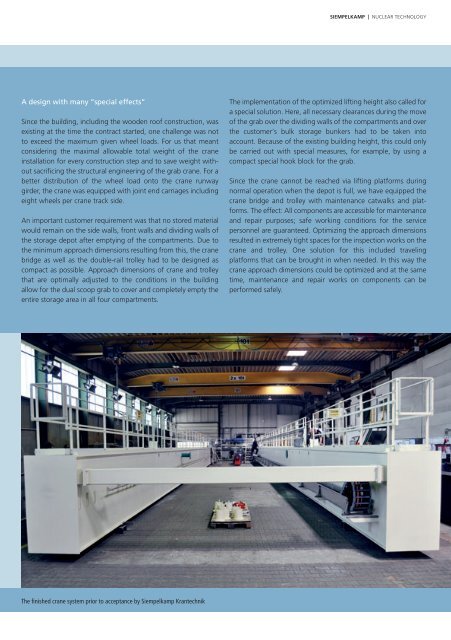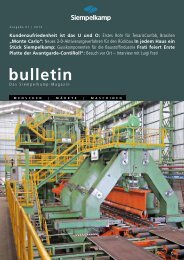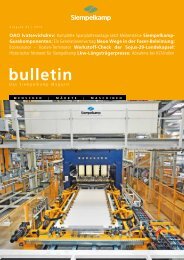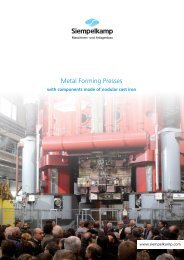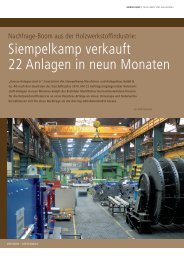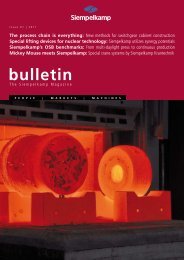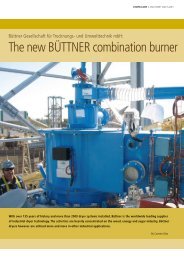Bulletin 2/2010 - Siempelkamp NIS
Bulletin 2/2010 - Siempelkamp NIS
Bulletin 2/2010 - Siempelkamp NIS
Create successful ePaper yourself
Turn your PDF publications into a flip-book with our unique Google optimized e-Paper software.
A design with many “special effects”<br />
Since the building, including the wooden roof construction, was<br />
existing at the time the contract started, one challenge was not<br />
to exceed the maximum given wheel loads. For us that meant<br />
considering the maximal allowable total weight of the crane<br />
installation for every construction step and to save weight without<br />
sacrifi cing the structural engineering of the grab crane. For a<br />
better distribution of the wheel load onto the crane runway<br />
girder, the crane was equipped with joint end carriages including<br />
eight wheels per crane track side.<br />
An important customer requirement was that no stored material<br />
would remain on the side walls, front walls and dividing walls of<br />
the storage depot after emptying of the compartments. Due to<br />
the minimum approach dimensions resulting from this, the crane<br />
bridge as well as the double-rail trolley had to be designed as<br />
compact as possible. Approach dimensions of crane and trolley<br />
that are optimally adjusted to the conditions in the building<br />
allow for the dual scoop grab to cover and completely empty the<br />
entire storage area in all four compartments.<br />
The fi nished crane system prior to acceptance by <strong>Siempelkamp</strong> Krantechnik<br />
SIEMPELKAMP | NUCLEAR TECHNOLOGY<br />
The implementation of the optimized lifting height also called for<br />
a special solution. Here, all necessary clearances during the move<br />
of the grab over the dividing walls of the compartments and over<br />
the customer‘s bulk storage bunkers had to be taken into<br />
account. Because of the existing building height, this could only<br />
be carried out with special measures, for example, by using a<br />
compact special hook block for the grab.<br />
Since the crane cannot be reached via lifting platforms during<br />
normal operation when the depot is full, we have equipped the<br />
crane bridge and trolley with maintenance catwalks and platforms.<br />
The effect: All components are accessible for maintenance<br />
and repair purposes; safe working conditions for the service<br />
personnel are guaranteed. Optimizing the approach dimensions<br />
resulted in extremely tight spaces for the inspection works on the<br />
crane and trolley. One solution for this included traveling<br />
platforms that can be brought in when needed. In this way the<br />
crane approach dimensions could be optimized and at the same<br />
time, maintenance and repair works on components can be<br />
performed safely.


